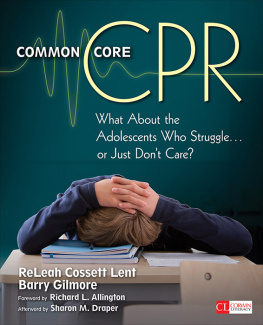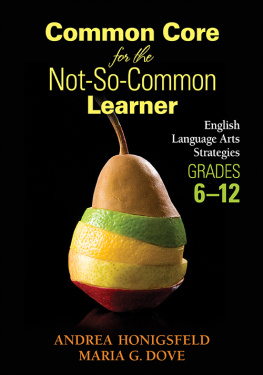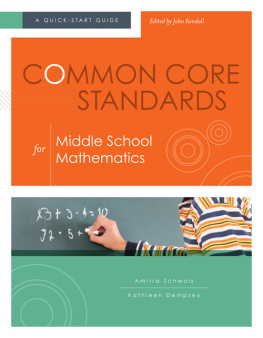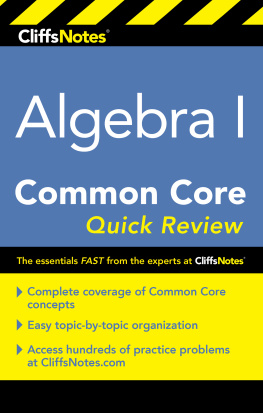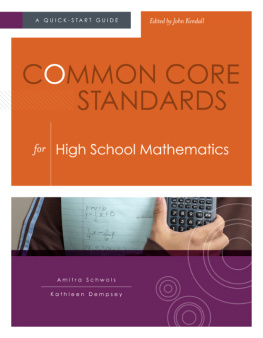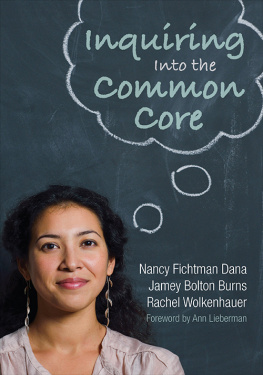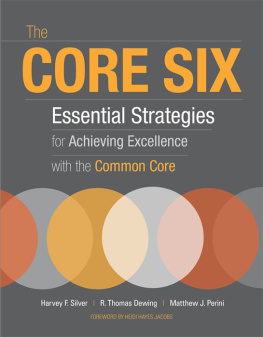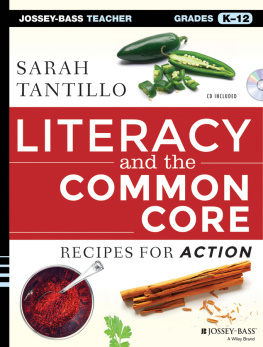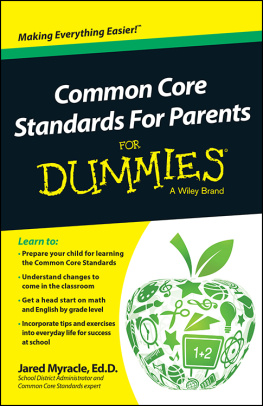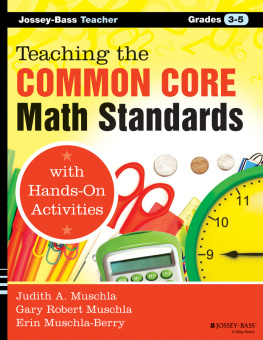
What Your Colleagues Are Saying
I have read two books that give me hope that the CCSS may improve both teaching and learning, especially for struggling readers and writers. This book, written by ReLeah Lent and Barry Gilmore, is one of those two books (the other was written by Lucy Calkins and her colleagues).... So, read this book and then begin to adapt your instruction in the manner described so artfully.
RICHARD L. ALLINGTON
Professor of Education, University of Tennessee,
and Author of What Really Matters for Struggling Readers, Third Edition
This is a very helpful and very timely book. Lent and Gilmore provide a very smart yet workable and commonsense approach to not only engaging struggling learners, but then assisting them through collaborative activity in a meaningful context of use to greater facility as readers and writers, speakers, and listeners. The approach will certainly help teachers help their students to meet the next generation of standards and assessments, but also so much more than that.
JEFFREY D. WILHELM
Professor of English Education and
Director, Boise State Writing Project
Common Core CPR is a powerful text.... [It] offers commonsense suggestions for successful work with the standards in all classrooms, especially with students who struggle. Using an interdisciplinary approach to literacy, the authors do not view the standards as isolated skills to teach, but as natural outcomes as they scaffold learning.
SHARON DRAPER
Author of Panic and Tears of a Tiger
Finally! A practical and comprehensive guide for teachers who want to ensure that the needs of all students are met in this age of CommonCore Standards, including reluctant and struggling readers and writers. Thank you, ReLeah Lent and Barry Gilmore, for helping ease one our greatest fears about the Common Corethat struggling students will struggle even more.
DEBORAH APPLEMAN
Author of Critical Encounters
in High School English, Second Edition
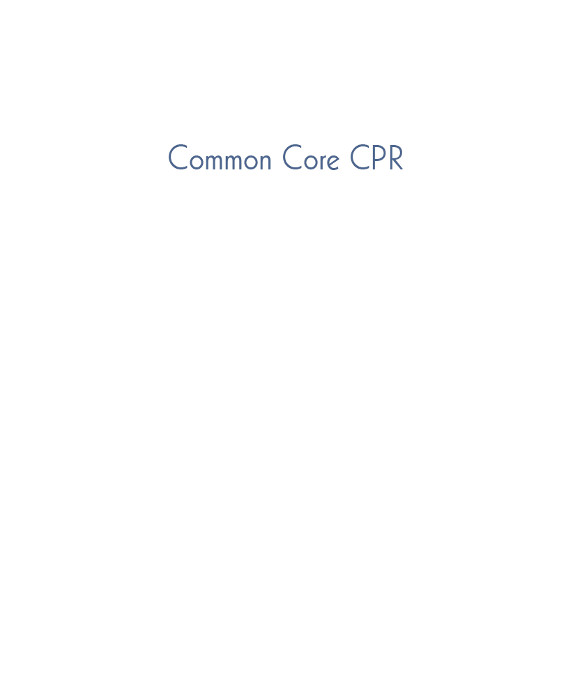

Copyright 2013 by Corwin
All rights reserved. When forms and sample documents are included, their use is authorized only by educators, local school sites, and/or noncommercial or nonprofit entities that have purchased the book. Except for that usage, no part of this book may be reproduced or utilized in any form or by any means, electronic or mechanical, including photocopying, recording, or by any information storage and retrieval system, without permission in writing from the publisher.
All trade names and trademarks recited, referenced, or reflected herein are the property of their respective owners who retain all rights thereto.
Common Core State Standards (CCSS) cited throughout the book are copyright 2010 National Governors Association Center for Best Practices and Council of Chief State School Officers. All rights reserved.
Printed in the United States of America
Library of Congress Cataloging-in-Publication Data
A catalog record of this book is available from the Library of Congress.
ISBN: 978-1-4522-9136-9
This book is printed on acid-free paper.
13 14 15 16 17 10 9 8 7 6 5 4 3 2 1

FOR INFORMATION:
Corwin
A SAGE Company
2455 Teller Road
Thousand Oaks, California 91320
(800) 233-9936
www.corwin.com
SAGE Publications Ltd.
1 Olivers Yard
55 City Road
London EC1Y 1SP
United Kingdom
SAGE Publications India Pvt. Ltd.
B 1/I 1 Mohan Cooperative Industrial Area
Mathura Road, New Delhi 110 044
India
SAGE Publications Asia-Pacific Pte. Ltd.
3 Church Street
#10-04 Samsung Hub
Singapore 049483
Publisher: Lisa Luedeke
Development Editor: Julie Nemer
Editorial Assistant: Francesca Dutra Africano
Production Editor: Melanie Birdsall
Copy Editor: Melinda Masson
Typesetter: C&M Digitals (P) Ltd.
Proofreader: Laura Webb
Indexer: Karen Wiley
Cover and Interior Designer: Gail Buschman
Foreword

Over the past year or two Ive read far too many books and articles about the Common Core State Standards (CCSS). With all that reading I now have read two books that give me hope that the CCSS may improve both teaching and learning, especially for struggling readers and writers. This book, written by ReLeah Cossett Lent and Barry Gilmore, is one of those two books (the other was written by Lucy Calkins and her colleagues).
What has worried me about the CCSS, and most of the material Ive read on the CCSS, is that there are folks who seem to interpret the message of the CCSS as doing what we have been doing while replacing current texts with more complex texts. One thing we know for sure is that giving struggling readers difficult text is no solution.
I live and work in a textbook adoption state, and this year has seen schools across the state replacing their commercial reading programs with newer commercial reading programsnew programs with CCSS compliant printed across the covers of the teacher manuals! However, these new programs typically present the old one-size-fits-all lesson design.
Too many people reading the CCSS documents seem not to have noticed the emphasis on problem-based learning, the emphasis on differentiated instruction, the emphasis on reading multiple texts, and the emphasis on wide and independent reading. Take, for example, this quote from the Publishers Criteria for Common Core State Standards (Coleman & Pimentel, 2012, p. 4):
Students need access to a wide range of materials on a variety of topics and genres both in their classrooms and in their school libraries to ensure that they have opportunities to independently read broadly and widely to build their knowledge, experience, and joy in reading.
What seems clear to me, and to ReLeah and Barry, is that implementing the CCSS will require much more than simply purchasing a new one-size-fits-all commercial curriculum package.
It is not just the CCSS expectation that students will be reading and writing much more frequently than is the case today, but that they will be reading and writing for personal reasons, not just for reasons a teacher has set for them. CCSS practitioners envision classrooms where students engage each other in literate conversations about what they have been reading and writingclassrooms where students dont just learn a few basic skills but acquire the proficiencies necessary to become literate and engaged citizens.
In this small book the authors provide a clear view of what CCSS classrooms might look and sound like. They provide examples of student work and lesson plans from a variety of teachers working in a variety of schools across the nation. The point that is driven home so succinctly in this book is that the CCSS may stimulate many more teachers to do exceptionally well, as do the exemplary teachers described here.
However, as the authors note, simply giving struggling readers more complex texts and more complex assignments will be more likely to drive them toward dropping out. The examples provided of the differentiated work that struggling readers might be doing in CCSS-guided classrooms, coupled with the sorts of growth these students exhibit when the lessons fit them, offer a sharp contrast to too much of what now passes as CCSS-informed instruction.
Next page
